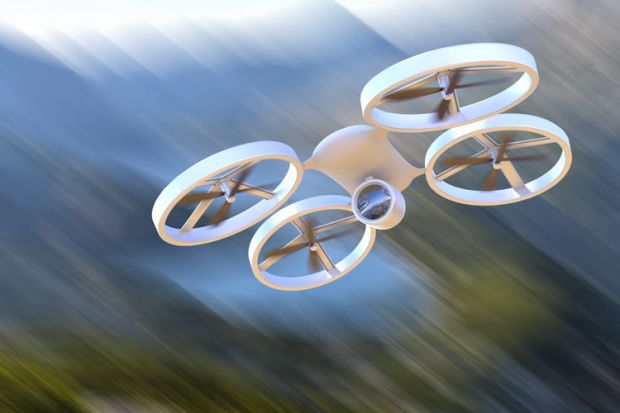A new controversy over drones is brewing in the US, but not in the way you might think: angry academics want their permission to fly them restored.
On 22 August, a coalition of nearly 200 research universities filed a lawsuit challenging new federal rules complicating and even banning the use of unmanned aerial vehicles within the US for work such as archaeological surveys and river mapping – even though hobbyists are still allowed to fly their own unmanned model aircraft.
“The restrictions being placed on education and research are out of all proportion to the actual danger posed,” said Paul Voss, an associate professor of engineering at Smith College, who coordinated a protest letter that was also signed by 28 peers at Harvard, Duke and Stanford universities and the universities of Michigan and Wisconsin, among others. The lawsuit was subsequently brought by the Council on Governmental Relations, an association representing 188 research-intensive universities.
The regulations are an attempt by the US Federal Aviation Administration, on orders from Congress, to address concerns about safety, security and privacy in the wake of drones’ proliferation.
But academics say the rules will increase the area over which the FAA has control. Federal laws had previously given it authority to regulate airspace 500ft (152m) above ground level and higher. Now, the researchers contend, in a “breathtaking jurisdictional expansion”, the FAA has extended its reach to ground level, “including our campuses, private backyards, and possibly even inside buildings”.
It has also widened its definition of “aircraft” to include “any contrivance invented, used, or designed to navigate, or fly in, the air”, which critics in academia say could include Frisbees, baseballs, paper aeroplanes and balsawood gliders.
The letter notes the inconsistency in regulations that means that “a 10-year-old hobbyist can freely fly model aircraft for recreation, while our nation’s scientists, engineers and entrepreneurs are prohibited from using the same technology in the same types of environments”.
Dr Voss has had to cancel an aerial vehicle design course he teaches because it is no longer possible for his students to fly their prototypes. That is because Smith College is a private, non-profit institution, which means that the new FAA rules categorise its drones as commercial, as opposed to hobbyist or public, and approval is required for each use.
“We already are falling behind” in drone technology as a result, said Dr Voss. He is now unable to test a meteorological drone he developed from scratch. “We’re going to find ourselves in the backwaters of aviation if we don’t figure this out.”
Academics at public universities are also affected. Benjamin Heumann, an assistant professor of geography at Central Michigan University who uses drones to study wetlands, said that his narrow June to August research window closed while the FAA took from two to 10 months to review and approve his various applications; one is still pending after five months.
“It makes it really hard to plan and collaborate with federal agencies and state agencies and other universities to do this sort of work,” said Dr Heumann.
“It’s frustrating to see my colleagues having to go to foreign countries to fly [drones for research] and we just simply can’t.”
Register to continue
Why register?
- Registration is free and only takes a moment
- Once registered, you can read 3 articles a month
- Sign up for our newsletter
Subscribe
Or subscribe for unlimited access to:
- Unlimited access to news, views, insights & reviews
- Digital editions
- Digital access to THE’s university and college rankings analysis
Already registered or a current subscriber? Login





